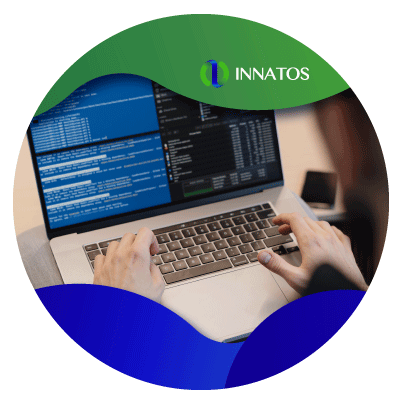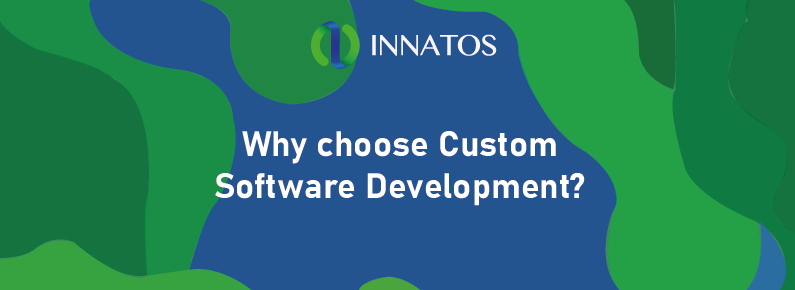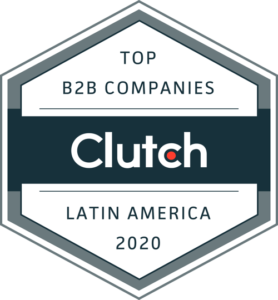Legacy Modernization: A Digital Transformation
Legacy Modernization: A Digital Transformation. IT providers are promoting many buzzwords nowadays, such as digitalization, low-touch economy, and future-proof technology. There are valid reasons why you should listen to what they have to say, including strengthening your competitive advantage and better service to customers. When you don’t, it’s easy to think that you’re missing out on adopting new technologies. Yet, two terms are essential to every business in today’s digital world: digital transformation and legacy (digital) modernization.
In a few words, digital transformation is the adoption of new digital technology, as well as the organizational culture, processes, and people that will ultimately change your business model. Modernization of legacy software will only tackle the upgrading or improvement of your existing systems and software to help the organization be more effective. While digital transformation is a strategic decision that impacts the entire business across all functions, modernization is a short-term tactical decision that brings the organization’s technologies up to speed with current standards.
What are the most important factors to consider when choosing to pursue one or the other?
-
Legacy software as technology endowment
In simple terms, a company’s technology endowment, as defined by McKinsey, refers to its technology talent, capabilities, leadership, and resources.
In other words, a company’s technology endowment includes anything that fuels the use of technology. Legacy software falls under the capabilities component of the technology endowment. By definition, when you think of legacy software, the first word that comes to mind is outdated. Yet when your software provider deployed it, you considered that software to be top-notch. What changed? Most likely, your customers’ needs have changed, and now they expect an upgraded version of your product or service and, by association, an update to the software that enables it. Moreover, when you look at your P&L, the software seems to be an expense rather than a revenue generator. Then, how do you go about transforming software back into a business catalyst?
-
Start with the old, Legacy Modernization.
 One school of thought in software development is that replacing software altogether is the safest way to future-proof your organization. And it may well be. However, the path you take to reach that conclusion should always go back to what prompted you to consider new software in the first place. Why do you need to take any decision at all?
One school of thought in software development is that replacing software altogether is the safest way to future-proof your organization. And it may well be. However, the path you take to reach that conclusion should always go back to what prompted you to consider new software in the first place. Why do you need to take any decision at all?
Start with your business model. Has it changed dramatically? Are the processes to deliver your services different today than they were when your software was in its prime? Are your teams struggling to create and sell what clients perceive as valuable products and services in today’s market? In that case, you are looking at more than just modernization; digital transformation is the answer. So when does it make sense to modernize legacy software and systems?
Take this example: an electronic health records (EHR) cross-platform software application. Doctors, nurses, patients, and their families used it to track conditions, vitals, doctor appointments, and lab results. It works amazingly, helping everyone stay on the same page with proper access rights, regardless of device or location.
 With the pandemic hitting in 2020, telehealth took the front stage, as the need to protect oneself from the COVID-19 virus became far more important than meeting in person with a doctor. Whereas the needs of the customers changed, it did not justify for EHR software providers to overhaul their business models completely. Rather, most of them have developed and integrated telehealth capabilities powered by new software atop their market-validated applications.
With the pandemic hitting in 2020, telehealth took the front stage, as the need to protect oneself from the COVID-19 virus became far more important than meeting in person with a doctor. Whereas the needs of the customers changed, it did not justify for EHR software providers to overhaul their business models completely. Rather, most of them have developed and integrated telehealth capabilities powered by new software atop their market-validated applications.
In a different context, a logistics company requires its drivers to clock in and out via a mobile app. Safety standards for drivers across the world now require automated GPS/satellite tracking of each truck, making the need to use a mobile application unnecessary. The new software and connected hardware seamlessly measure when a trip starts and ends without needing the drivers’ input. They also encourage proper rest, adoption of safe driving speeds, and provide geolocation for real-time tracking, which in turn improves delivery estimations and fleet forecasting. In this case, the logistics company had to transition to new software, related hardware technology, processes, culture focused on the safety of drivers, and people who could manage this whole transition. This is an excellent example of digital transformation.
In any of these two cases, factors such as user experience, user interface, technology stacks versions, availability of resources, scalability, timeline, or budgets still influence leadership decisions. These efforts need to be focused on business domain changes first, and then on the technology required to fulfill them. Start with the changes in the business needs, then address technology requirements.
-
Prioritize the “human” in resources, Legacy Modernization.
 A while has passed since 2013 when we heard Dr. Klaus Schwab, the founder of The World Economic Forum, make a stunning yet amazingly accurate statement: “Capital is being superseded by creativity and the ability to innovate. – and therefore by human talents.” The same Dr. Schwab coined the term “Talentism” as the new capitalism. As I look at the various organizations I’ve interacted with as an IT entrepreneur over the years, by far the greatest temptation in adopting new technology is to assume that access to funds and cutting-edge technology are the only success factors. Somewhat surprisingly, the availability of talent seems to take a worrying last place. Moreover, whenever IT talent is acknowledged as “a factor” it is most often referred to as “resources” showing up as an expense line in the software modernization or digital transformation budget. Why even consider talent as a key factor? Isn’t it just a commodity?
A while has passed since 2013 when we heard Dr. Klaus Schwab, the founder of The World Economic Forum, make a stunning yet amazingly accurate statement: “Capital is being superseded by creativity and the ability to innovate. – and therefore by human talents.” The same Dr. Schwab coined the term “Talentism” as the new capitalism. As I look at the various organizations I’ve interacted with as an IT entrepreneur over the years, by far the greatest temptation in adopting new technology is to assume that access to funds and cutting-edge technology are the only success factors. Somewhat surprisingly, the availability of talent seems to take a worrying last place. Moreover, whenever IT talent is acknowledged as “a factor” it is most often referred to as “resources” showing up as an expense line in the software modernization or digital transformation budget. Why even consider talent as a key factor? Isn’t it just a commodity?
Think of a scenario where you need to modernize legacy software, and immediately prioritize understanding the needs of your customers, how your service or product should too, and the software you need. Your business domain experts (operations, sales, marketing) all get together to define those needs, and they come up with amazing solutions. The IT team would then work with your business domain team to translate the business requirements into technical requirements. You quickly understand they are unprepared and understaffed to address this new stage of your business. Most likely you won’t have to manage software development, deployment yourself. Still, you need a product and software engineering responsible or team to manage the development through a software development partner. Hiring someone at this point is possible, but then you’d have to adjust your timeframe expectations to allow them to learn your business first.
Having the right technical talent and leadership in your organization is a potential challenge as you plan to modernize your systems or to develop a digital transformation strategy. My recommendation has always been and remains to be strategic about talent. Be ready to invest, especially in leadership that is already strong in digital technologies who can at the same time dip into their experience with your legacy technologies. Especially useful when your organization has adopted a digital transformation strategy, your team’s ability to lead and navigate the transition from one technology reality to another will prove to be crucial. With the increase of the pace of business driven by the speed of adoption of technology, you don’t want to be in a situation where you have to look for the people who can enable your organization to be digital-native.
-
Just the beginning, Legacy Modernization.
Taking into account technologies that can be modernized as you go through digital transformation and prioritizing human capital as the main success factor is just the start. They represent the foundation to help you develop a tech-forward framework that in turn allows you to stay competitive and even innovate, and more importantly, to answer the why behind your vision in a fresh new way.
About the Author
 LiftUp is an international IT consultancy with offices in the United States and Romania.
LiftUp is an international IT consultancy with offices in the United States and Romania.
We provide IT services in the areas of Digital Product Development and Team Augmentation.
LiftUp Solutions relies on a unique DNA that combines technology with recruiting expertise to help customers overcome the global IT skills gap and achieve their vision through next-generation technologies.









Leave a Reply
Want to join the discussion?Feel free to contribute!